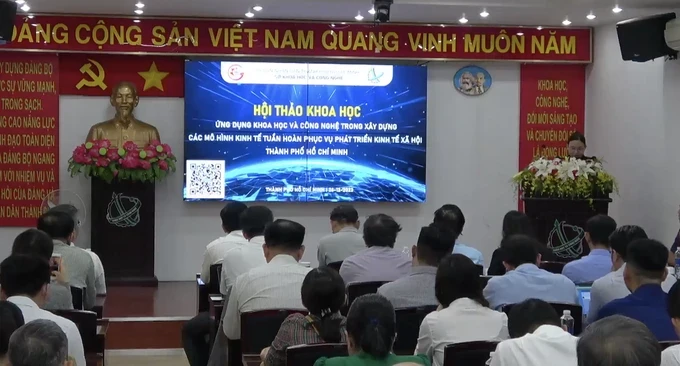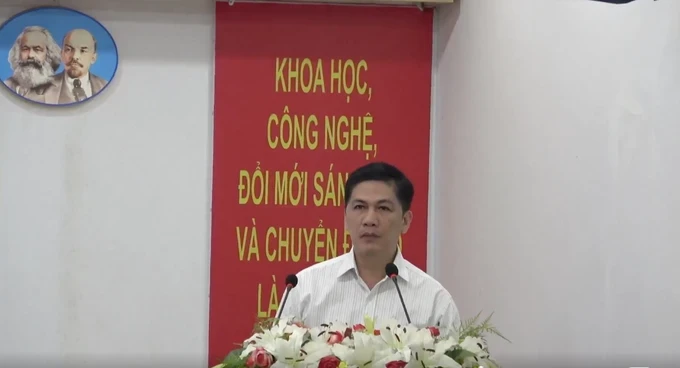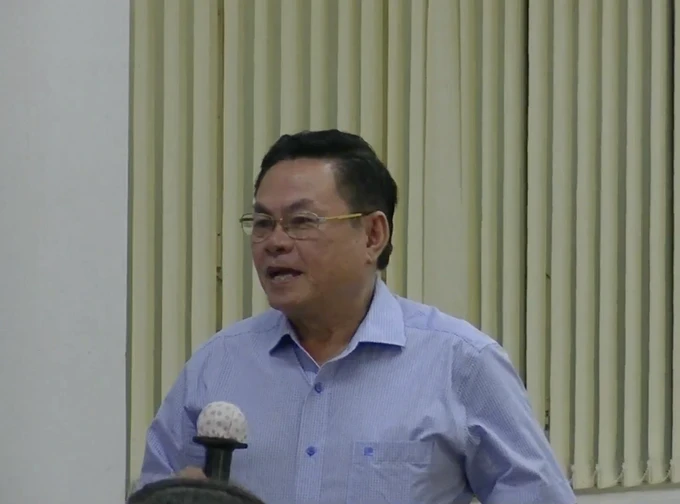The HCMC Department of Science and Technology yesterday held the conference ‘Applying science-technology to build circular economy models for socio-economic growth in HCMC’.

The conference aims at sharing experience and discussing priorities in scientific research for useful technological solutions and policies in the field of circular economy in HCMC. It also wants to promote close collaboration among the State, businesses, academies, and universities in studying, developing, and offering consultation about suitable circular economy models here.
The ultimate goal of the conference is to help enterprises seek measures to increase their product value, creating a driving force for innovative activities and economic restructuring.

Assoc. Prof. Dr. Nguyen Hong Quan – Head of the Institute for Circular Economy Development (ICED) from Vietnam National University-HCM – shared that green growth is inevitable in Vietnam and in the world in general.
To grow green, it is necessary to apply circular economy models, which normally focus more on reducing input materials, optimizing manufacturing activities, treating waste, and using renewable energy. These acts help to form a production loop for maximum effectiveness in natural resource use, and thus reaching sustainable development.
To better implement the circular economy in HCMC, Dr. Quan proposed an establishment of a green innovative ecosystem among HCMC, the Central Highlands, the Southern provinces, and international partners; a development of suitable training courses for students and green startups; the provision of suitable supportive policies to help companies turn green.

Deputy Director Le Thanh Minh of the HCMC Science-Technology Department informed that lately, innovative activities in HCMC have greatly contributed to the city’s economic growth. In the 2016-2022 period, HCMC invested VND13.66 trillion (US$561.4 million) in science and technology, accounting for over 2.55 percent of the state budget.
As a result, its Total Factor Productivity Index (TFP) has rapidly risen to reach an average of 46.7 percent, including a contribution of 74 percent from science and technology. HCMC’s labor productivity doubles the national one, while that of technological businesses is 1.67 times as high as the general rate of the city.
Participants in the conference suggested that current circular economy models in HCMC are still at the macro level. Therefore, it is necessary to prepare more detailed roadmaps and models.
The city should concentrate more on raising awareness about circular economy in the community, especially lecturers and students. Suitable infrastructure and corresponding supportive policies should be developed so that enterprises can transform from a linear to circular and greener economy.
In the 2021-2025 period, HCMC aims at creating a smart and sustainable city, playing the leading role in the national economy. However, the implementation of circular economy to fulfill that mission encounters many obstacles.
This has called for such a conference like this so that related organizations (businesses, educational institutes) clearly identify the importance of circular economy in manufacturing activities, and more feasible solutions can be devised to promote this economic type.
By Bui Tuan – Translated by Yen Nhi










